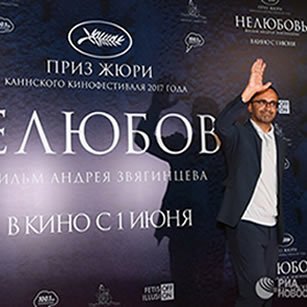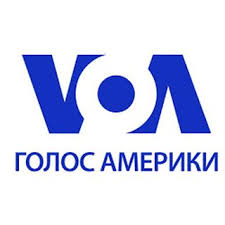In these two blog posts, Vlad Strukov and Andrey Makarychev explore the notion of (in)completeness in two pan-continental geopolitical projects: EU/Europe and Russia/Russian World/Eurasian Economic Union (EEU).
The concept of (in)completeness, according to Strukov, accounts for the ongoing processes of re-visiting and re-modelling these two dominant geopolitical projects from an identity perspective. He suggests that (in)completeness defines the relationship between Europe and the contingent geopolitical and geocultural Russian/Eurasian space, while enabling the ongoing calibration of their relationship.
A Glance at the (In)complete EU Project (Vlad Strukov, University of Leeds)
The constant alternation of centrifugal and centripetal forces in Europe is an indication of the EU being simultaneously complete and incomplete. In the realm of imagination, Europe, as an idea, is an undiminished and undivided entity. In the arena of realpolitik, Europe, as a policy, is a contradictory game-like construction reflecting changes in the bigger world.
The sense of Europe’s (in)completeness has become apparent in recent years and is accounted for by a variety of reasons. Since the financial crisis of 2008, the future of Europe has been determined less by agents in its constitutive core (“smaller Europe,” the legal framework of the EU) and more by agents on its periphery (“larger Europe”). Some examples are outlined below (not in order of importance or impact).
To begin with, some countries in southern Europe (such as Greece) have transformed their economic hardships into political agendas that challenge EU leaders and policymakers. A by-product of this is that talk about European “struggles” (economic and other) fuel rising domestic nationalism. This happened in the UK where discussions, often fuelled by the media, led some citizens to feel un-obliged to help their southern counterparts.
In recent years, Russia and Turkey have aggressively interfered in European politics. Just to mention a few quick examples, during the general elections in The Netherlands, Turkey tried to send in a convoy of activists to get media attention and sway public sentiment (and it is currently trying to block some NATO decisionmaking). Russia provided support to its preferred candidate in the recent French elections. Both Russia and Turkey have motivations for their actions. Russia certainly wants the sanctions lifted, which were imposed on it after its annexation of Crimea. Speaking of Ukraine, the Euromaidan was about the choice to either associate with the EU or EEU, and these, in turn, were partially—(in)completely—economically re-configured in the wake of the 2008 financial crisis.
Further, the ongoing wars in Ukraine and Syria, and the refugee crisis, have de-stabilised and re-shaped the political and social situation on the continent. The debate about the future of refugees in Europe sparked discussions about different kinds of European spaces, for example: geopolitical spaces (where refugees can be re-settled), economic spaces (where migrants can contribute to development), and imaginary spaces (where notions of “otherness” are negotiated).
Turning back to the UK, its decision to leave the EU meant a re-positioning of it from being at the European core to the periphery, possibly completely outside the European project. The UK will probably remain central to European security, however its stance on immigration and its potential disassociation from the single market suggest a new configuration of power in Europe. In fact, the UK has already sought support from non-EU countries such as the United States, Saudi Arabia, and Turkey, thus working along peripheral, not central zones of cooperation. These external partners, interestingly, have affirmed that the UK should maintain its affiliation with the EU.
To many observers, Europe appears to be in a perpetual crisis, divided by its differences and threatened by new challenges that mainly emanate from the continental periphery. However, the centrifugal forces have actually strengthened the European project. This has been evidenced, among other examples, by the recent liberalisation of the EU visa regime with Georgia and Ukraine. Brussels envisaged that this would contribute to the security framework of the continent and its economic prosperity. These same notions, however, have been interpreted differently by those who oppose the enlargement of the EU and fear, for economic and security reasons, the free movement of people across the continent.
A Glance at the (In)complete Russian Project (Andrey Makarychev, Tartu University)
Russian borders “do not end anywhere,” President Putin recently announced at an event convened by the Russian Geographical Society. This rather provocative statement nicely fits into the sense of imperial overstretch that has been gradually colonizing mainstream discourses about Russia. What signifies Putin’s celebratory—if not triumphant—declaration of Russia’s "infinity" is an intrinsically dislocated and unfixed national identity doomed to always remain (in)complete. This is so, first of all, due to the very impossibility of achieving a borderless Russia in keeping with Putin’s ideal of universality.
By the same token, Russia’s (in)completeness is a phenomenon with more than one facet. Russia’s collective “Self,” which makes no big difference between the national and the imperial, is easily manipulated and can abruptly include territories beyond national borders. Crimea and Novorossiya are two examples of this proclivity to refer to neighbouring lands as allegedly central—if not constitutive—of Russia’s sense of identity. Yet this possessive feeling can be a sign of vulnerability and non-self-sufficiency, and can be extended to the entire Ukraine, a country that many Russians consider as the subaltern and almost indispensable element of the so-called Russian World.
Complications do not stop there. Chechnya or any other territory in the North Caucasus, being constitutive parts of the Russian Federation from a legal perspective, are widely perceived as more foreign and culturally alien than, for example, Donbas, Crimea, or even all of Ukraine. This type of (in)completeness makes Russia a country with multiple and blurred borders: legal parts of other post-Soviet countries might be de-facto incorporated into the Russian World system via economic and financial arrangements, citizenship policy, security guarantees, or religious diplomacy.
Transnistria, Abkhazia, and South Ossetia are examples of Russian eagerness to embrace peripheral (break-away and secessionist) units. Yet this openness in most cases remains ambiguous: separatist units are politically protected and included in Russia’s sphere of influence, but not necessarily welcomed as full-fledged members of the Russian Federation.
In Russia, the total lack of any serious debate on this primordial important issue attests to a paradoxical imbalance in the national identity: it is constructed by meta-narratives of the Russian World as an engine of aggregating lands gravitating toward Russia, but in the meantime, the voices of Russians themselves are more tacitly presumed than well-articulated. The come-hither-but-stay-at-arms-length sentiment has led some sociologists to determine that Russians are increasingly seeing, for example, Abkhazia and South Ossetia as independent states rather than as parts of Russia. Should this trend prevail in the years to come, it could signal Russia’s growing sense of its national borders, even if actually drawing them on paper could leave a feeling of imperial (in)completeness.
Another dimension to these inclusion/exclusion games is the inevitability of hybrid forms of identification and institutional affiliation. The two best examples in this respect are Armenia, which is a member of the EEU and CSTO but continues developing relations with the EU, and Moldova, which has an EU AA/DCFTA and visa-free regime but still (and increasingly so) leans toward Russia. EU-Kazakhstan relations are also illustrative in this regard, along with Azerbaijan’s equidistance from both the EU and Russia. Georgia represents a different type of cultural hybridity that combines a clear sympathy with and penchant to Europeanization (presupposing liberal reforms) with the strong attachment to Orthodoxy with its obvious conservative underpinnings.
Conclusion
The EU/Europe and Russia/Russian World projects display a similar (in)completeness in both official and public discourses. This translates into different combinations of inclusive and exclusive policy tools and actions. Both Brussels and Moscow are dealing with neighbours that wish to be part of them but full integration is often elusive. With piecemeal identities on all sides—in Brussels, Moscow, in EU member states, and in each peripheral state—it is not clear what form either the European or Russian/Eurasian regional projects will look like in the future. At present, the over-lapping and ill-defined EU and Russian policies toward both “smaller Europe” and “larger Europe” keep a sense of (in)completeness alive.











